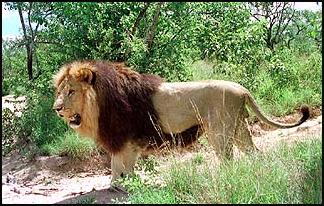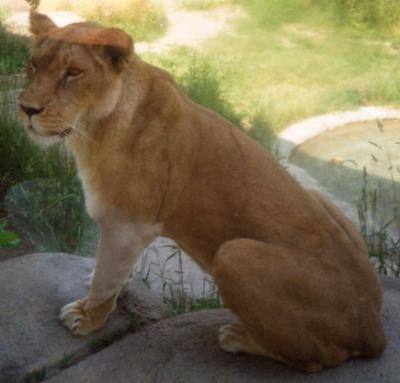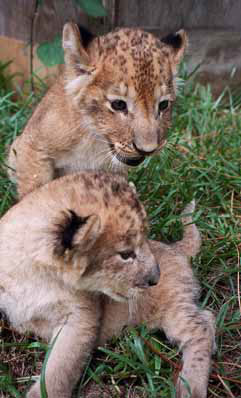Introduction
Among all wild life species, the lions are one of the most feared and respected wild animals, because of their vigor, courage, and control they enjoy over other wild life species. As research shows, the lion takes the second position in the feline family in terms of weight and size, although it is the strongest animal in the family; hence, its nickname the “king of all jungle.”
Prior to their present depleted numbers, a decade ago lions were present in almost all world natural forested habitats, a fact that has undergone transition, because, globally, less than fifteen thousand lions exist presently. In addition to such reductions in numbers, some lion species are at the verge of becoming extinct.
For example, over some few decades ago, most world forested habitats, more so the Middle East were rich in the Panthera Leo Persica lion species, a fact that is contrary presently, because of their diminishing numbers. As research studies show, the primary cause of such drastic reduction is primarily because of human activities that include hunting and encroachment into lions’ natural habitats, in the name of agriculture (Big Cat Rescue Para. 1-3).
Lion’s Physical Characteristics
Although they take the second position in the cat family in terms of body size and length, lions are among the strongest wild animals existing in nature, because of their predatory characteristics. They usually have a very powerful jaw, with almost three inches long canine teeth hence, their ability to handle even larger animals, when they are hunting for food. Depending on their global position in terms of habitat and natural environmental conditions, the lions’ fur can be of a buff, reddish, dark brown, or a yellowish coloration, although most of them have black tail clumps and lighter stomachs.
Lions usually have a rough tongue, because of the existence of bumps on the exposed sections of the tongue. Such bumps are of great help during hunting and grooming, for they assist the lion to grasp their prey and to get rid of parasites from their female targets respectively (Defenders of Wildlife 1).
In terms of body size, there is a great variation in body size and weight between male and female lions; whereby, males have almost a thirty-five percent extra body size and are almost twice as heavy as female lions. That is, depending on their habitat, female lions can have a body weight of between one hundred and twenty three to one hundred and eighty two kilograms, whereas male ones can have a body weight that ranges between one hundred and fifty to two hundred and forty one kilograms. In addition to body weight, lion’s body length also varies, although the average length of a mature lion’s body is eight to nine feet (Honolulu Zoo 1).


In addition to the body size and fur coloration, one primary characteristic that makes lions an exclusive species of wild animals is their mane. Although most lions may have small body sizes, in most cases the size of their mane will make them look larger than their normal size. The lion’s mane is of great significance in times of war with other lions and their great feeding enemies, the hyenas. In addition to its significance during war times, the lion’s mane is of great significance during mating seasons, as most female lions love mating with their male counterparts with the darkest and biggest manes (Triveli Para. 1-3).
It is important to note that, although most lion species have manes, there exist some lion species that lack manes in some national parks for example, Tsavo National Park in Kenya, and some Senegalese forested reserves. When it comes to the sizes and densities of manes, as research studies have proven, climatic conditions and the geographical location of a lion species are two primary factors, which determine such characteristics (Triveli 1).
Subspecies of Lions
Prior to current state, in the past there existed more than sixteen species of lions in all global forested areas some of which included Panthera Leo Verneyi, Senegalensis, azandica, Europea, goojratensis, Krugeri, melanochaita, Massaicus, Persica, Barbary, and Roosevelti; although the basis of grouping varies among different taxonomists (Spiritus Temporis Web Community 1).
In grouping lions, majority of taxonomists take into considering their physical outlook, natural surroundings, specific geographical areas, and general body outlook. Currently, there exist only two groups of lions namely the Asiatic and African lions; names that depend on their location and natural habitats (Johnson 1).
The Lion’s Life Cycle
As research studies show, under favorable conditions, lions can survive for approximately 13 years, although currently most lions die before reaching that age, because of two main human practices namely poaching and destruction of their natural habitats. In addition, these human activities, unpredictable climatic changes have not either spared lions, as most of them never survive in hot temperatures. As compared to male lions, female lions have long life spans, a fact that research attributes to their improved hunting proficiency.
To counter their predators’ attacks, lions live in clusters, although it is very normal to find a secluded female lion, as most of them may roam around their habitats in such of a cluster where they can fit. This like a scenario occurs mostly in cases of extreme harassment from their male counterparts, as most female lions can easily find new male counterparts (Wildlife Africa 1).
The gestation period of a lion is approximately one hundred and five days, after which a lion give birth to blind cubs in areas isolated from their pride’s habitat. After opening of the cubs’ eyes, the female lion will start to orient the curbs to the hunting game hence, by their second year; most cubs will have acquired the expertise necessary to catch a prey. Because most cubs are sexually active by end of their second year, to orient them to a new life, female lions will detach themselves from them by sending them off to seek new friendships within their habitats.
Most lactating female lions have the tendency of rearing their cubs together; hence, in absence of some lactating mothers, the available lactating female lion will provide milk to all available cubs. Unlike mature female lions, which must bear extreme mistreatment before older female lions accept them into their prides, mature male lions will use force to take charge of a cluster. To achieve this, most mature male lions have to device mechanisms of driving away older males, or in cases where they receive extreme antagonism from such males; most of them end up terminating older males’ lives (Tilden 1).
Picture of a Lion’s Cubs

Distribution and Habitats
Lions’ habitats vary depending on the environmental conditions of areas they thrive best. For example, most African lions thrive well in the savanna grasslands, a case that is different in India, as most of India’s lions thrive well in the dry savanna forest reserves.
In addition to these two types of forested areas, some lion species thrive well in the extreme dry conditions of Kalahari Desert, and some sections of the Kalahari Desert. Most lions never prefer living in densely forested areas, because most forested zones hide their prey. On the other hand, because most grassland(s) are rich agricultural zones occupied by humans, most lions tend to ruin away from such zones to avoid being victims of human poaching (Wildlife Africa 1).
Behavior
As compared to other wild animals belonging to the cat family, in their prides, lions are the most interactive wild animals, with distinct power structures. For example, as research studies show, in a pride, most strong female lions receive more recognition, as compared to weak male lions and incase a stronger male lion defeats an old one, then membership of such a lion to that pride ends immediately. Although some lions driven by hunger may hunt during the day, in most cases lion search for food at night, because the darkness will reduce chances of their prey noticing them (Dongen 1).
Lions have specific hunting zones, for example, near water holes whereby, in most cases the success of their hunting ventures depends on well-coordinated efforts. Lions depend primarily on meet for their sustenance, whereby daily a mature lion consumes approximately 11-15 pounds of meat. Because of the sociability nature of lions, whenever one lion catches its prey it will growl hence, attracting its pride to share in the new catch.
On the other hand, some lions within the pride are sick hence, cannot manage to collect their own foods, then other healthy lions within must tend to such lions’ needs; hence, a proof of the sociability nature of lions. Although the lions’ primary preys are non-hostile animals such as zebras, Giraffes, and wildebeests, lack of these animals can make lions to go as far as hunting dangerous animals, for example, porcupines (Africa Wildlife Foundation 1).
In terms of communication, lion communicate primarily through body contact, or by rubbing their cheeks, necks, and bodies together. Although lions also have fights more so when feeding, such fights are short-lived because lions easily make peace between themselves.
Conclusion
In conclusion, although lions are among the worst enemies of man, rarely do they attack humans unless one disturbs them in their natural habitats. In addition to such disturbances, lions will only attack humans when they break from conservation zones, something that happens because of the human tendency to vandalize fences encircling conservation zones. Considering this, it is of great significance for all individuals to give a hand in ensuring lions receive the required protection, it being the only primary mechanism of ensuring they do not become extinct.
Works Cited
African Wildlife Foundation. Lion, fact file. Africa Wildlife Foundation. 2010. Web.
Big Cat Rescue. Lion-Panthera Leo.Big Cat Rescue. 2010. Web.
Defenders of Wildlife. The African lion: Panthera Leo. Defenders of Wildlife. 2010. Web.
Dongen, Lucie. Lion’s behavior. 2010. Web.
Honolulu Zoo. The lion: physical characteristics. Honolulu Zoo. 2008. Web.
Johnson, Priya. Lion Habitat: where do lions live? Buzzle. 2010. Web.
Spiritus Temporis Web Community. Lion Subspecies. 2005. Web.
Stoffel, Tim. Lion facts. Lion Lamb.2010. Web.
Tilden, Eric. Lifecycle of the lion. E-how. 2010. Web.
Triveli, Bijal. Female lions prefer dark-maned males, study finds. National Geographic News, 2002. Web.
Triveli, Bijal. To boost Gene pool, lions artificially inseminated. National Geographic News, 2002. Web.
Wildlife Africa. Animal behavior: the lion. Wildlife Africa. 2005. Web.